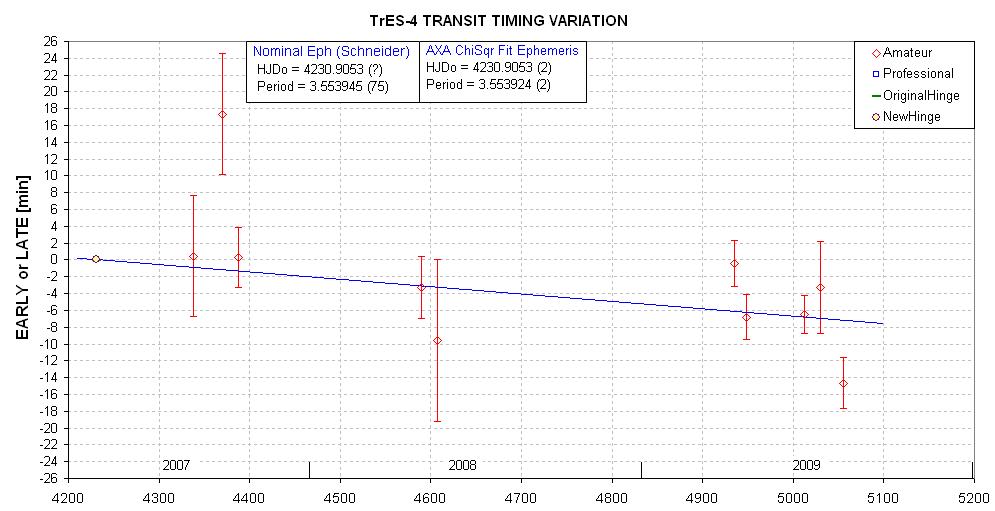
Links internal to this web page
Comments
Basic data
Table summary of transit measurements
Transit
LCs
Professional
light curves
OOT LC
Finder Image
References
Comments on LCs on this web page
Period is close to correct but could use a slight shortening.
Basic data -
Updated 20090813
RA = 17:53:13.0, Decl = +37:12:43
Season = June 21
B = 12.11, V = 11.59, R = 11.28, I =
10.99; B-V = 0.52
HJDo = 4230.9053
(?) & P = 3.553945 (75) day (Schneider's
Extrasolar Planets
Encyclopedia)
HJDo
= 4230.9053
(2) & P = 3.553924 (2) days
Depth = 12.4
± 1.5 (CVR bands), 10.8
mmag (z-band)
Length = 3.54
± 0.08 hr (CVR bands),
3.5 hr (z-band)
Fp = 0.32 ±
0.06, F2 = 0.84 ± 0.11
b = 0.75, Rs = 1.78 Rs, Rp = 1.67 * Rj
Table Summary of Measurements
- Updated 20090813


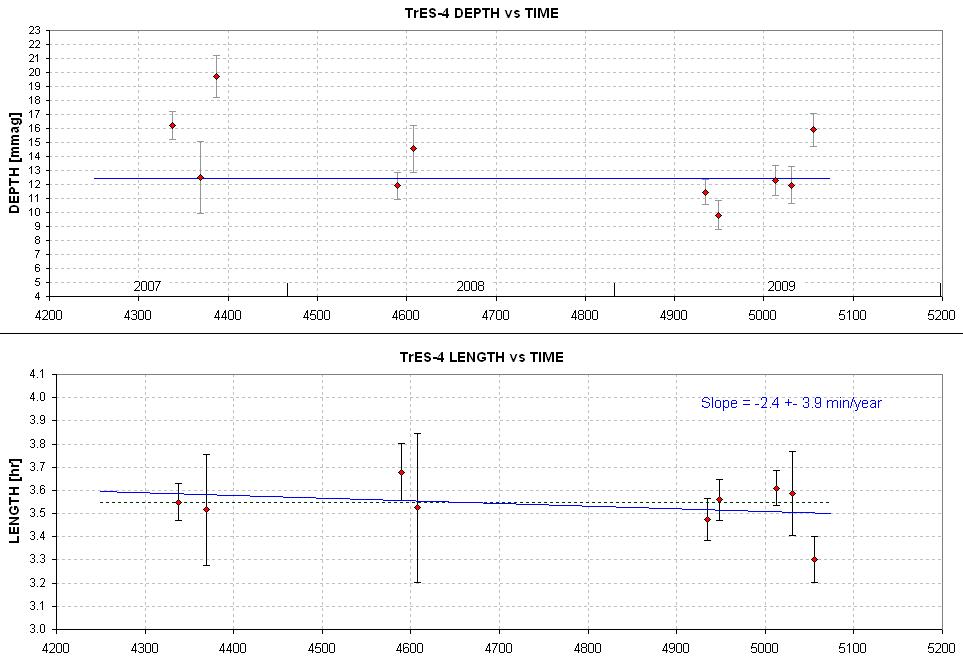
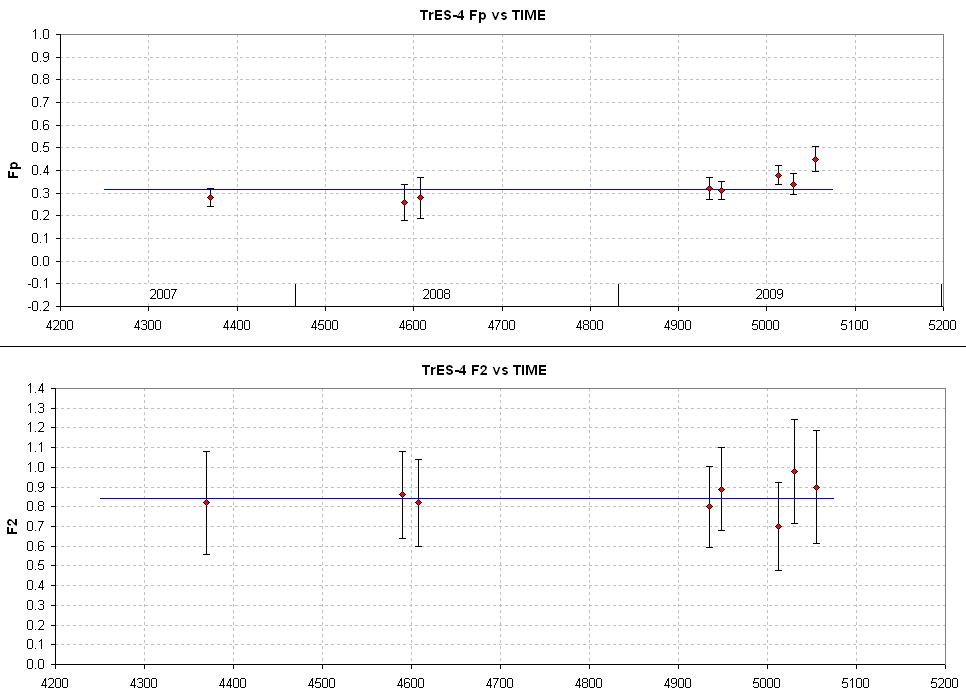
Transit light curves
not yet included in updates of previous sections
All LCs below here have been included in updates of previous sections
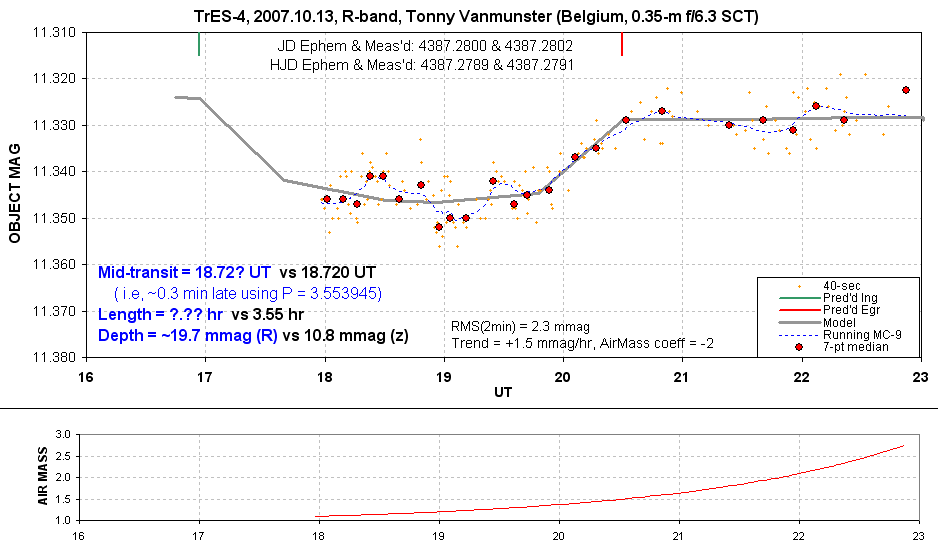
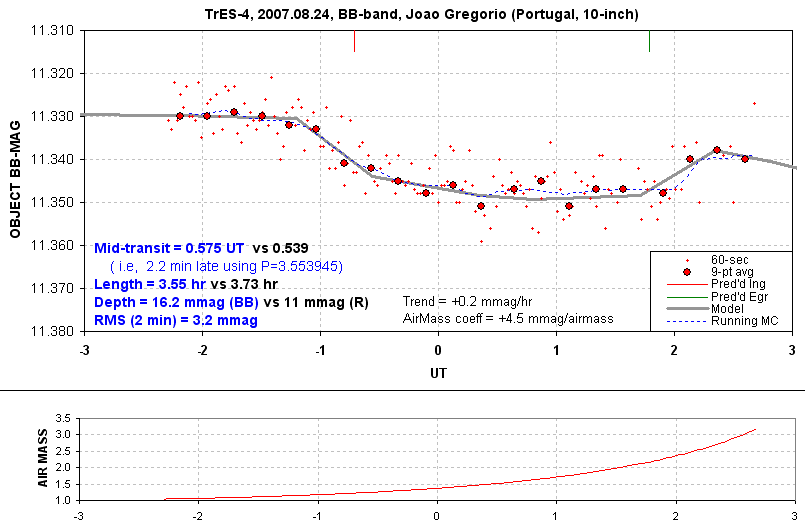
Great LC considering the high air mass, lightning that terminated
observations and use of a portable 10-inch telescope at a remote
site.
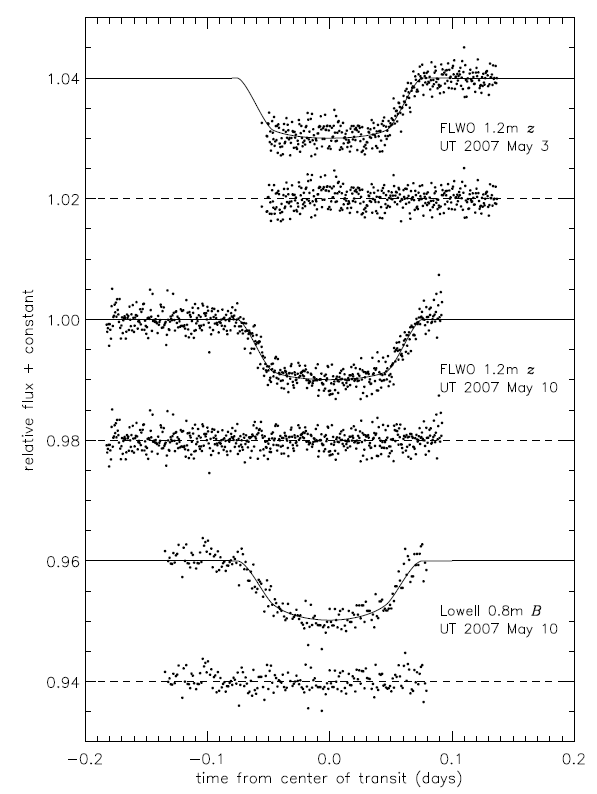
Discovery paper LCs (Mandushev, et al, 2007).
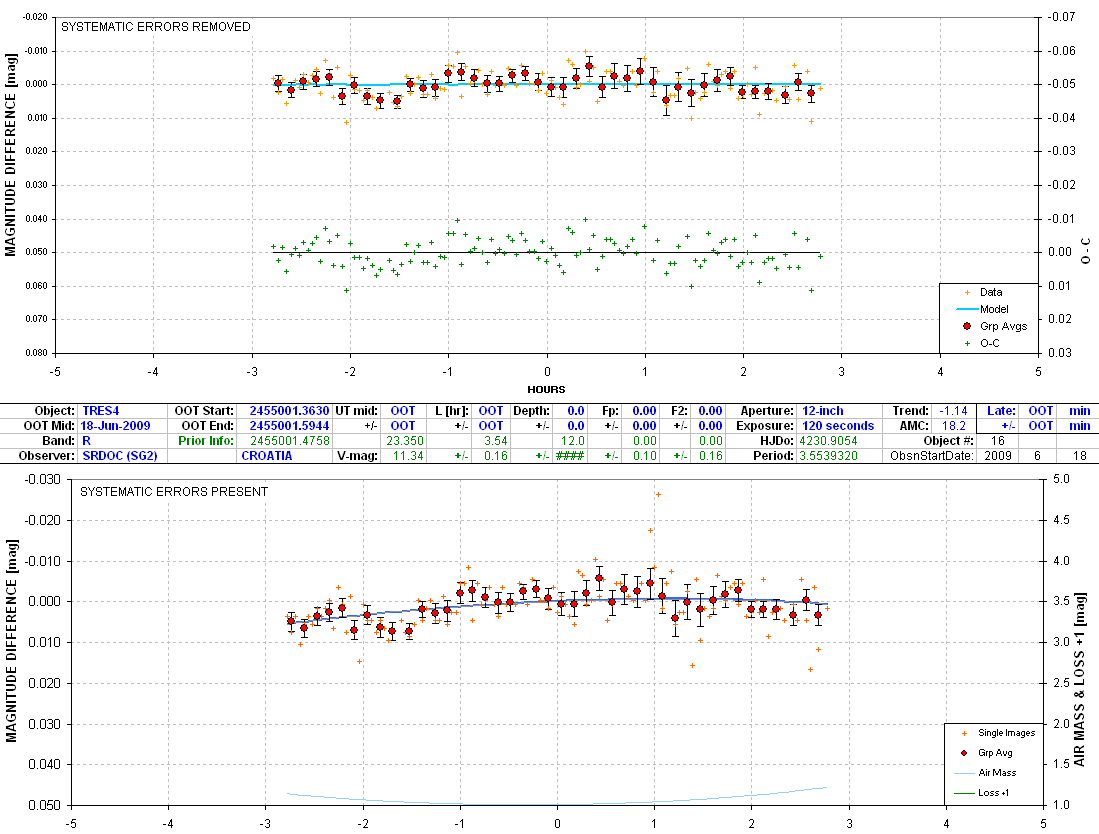
9618SG2 Looks like a brief dip
at -1.7 hrs. A 5 mmag depth would correspond to Rp = 0.6 Rj, or Mp = 5%
the mass of TrES-4b. This, by itself, does not rule-out the possibility
that
the dip is produced by another exoplanet orbiting the TrES-4 star.
Now consider the length of the dip. Length ~ 0.5 hr, so orbital velocity
would be 7 times that of TrES-4b.
For this orbital velocity the orbital radius would have to be 2%
of TrES-4b's orbital radius, which would place it within the star (12%
of star's radius).
Therefore this dip is not due to another exoplanet orbiting the
TrES-4 star!
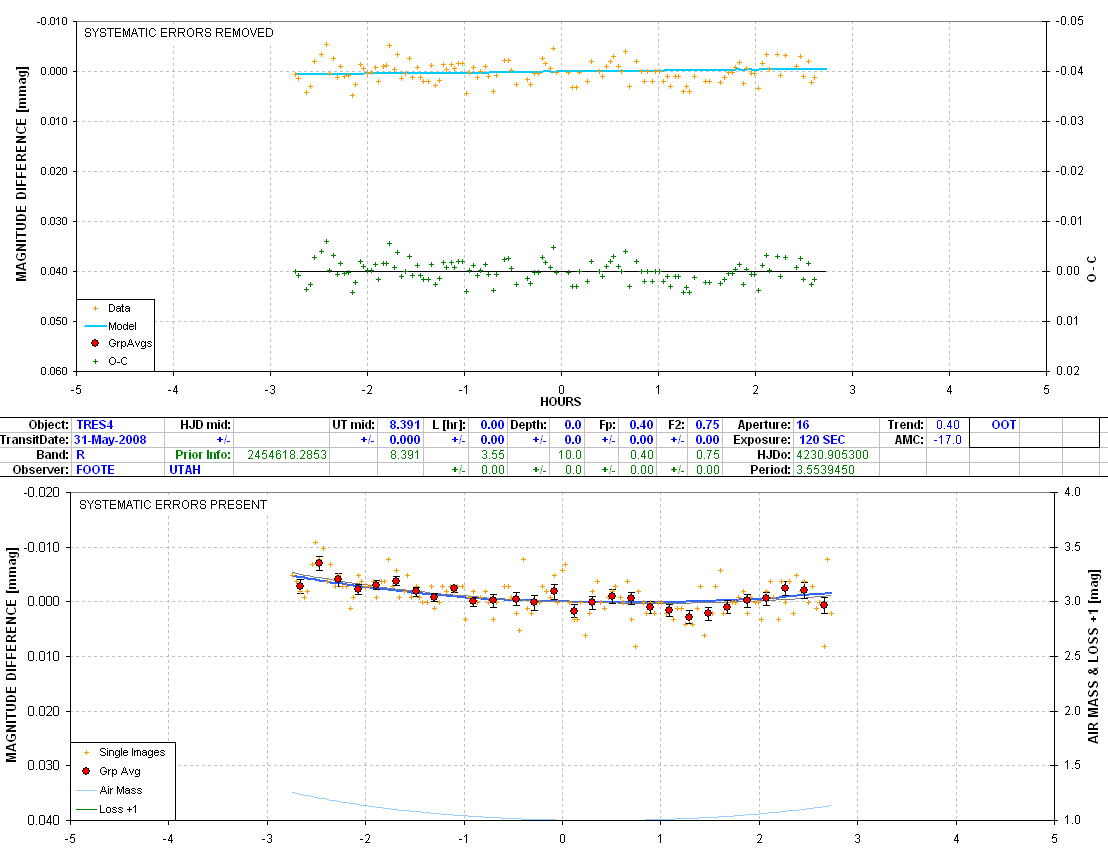
There's an intriguing "dip" at 1.2 hr past 08.39 UT that may
be noteworthy at some future date when more OOT observations are available.
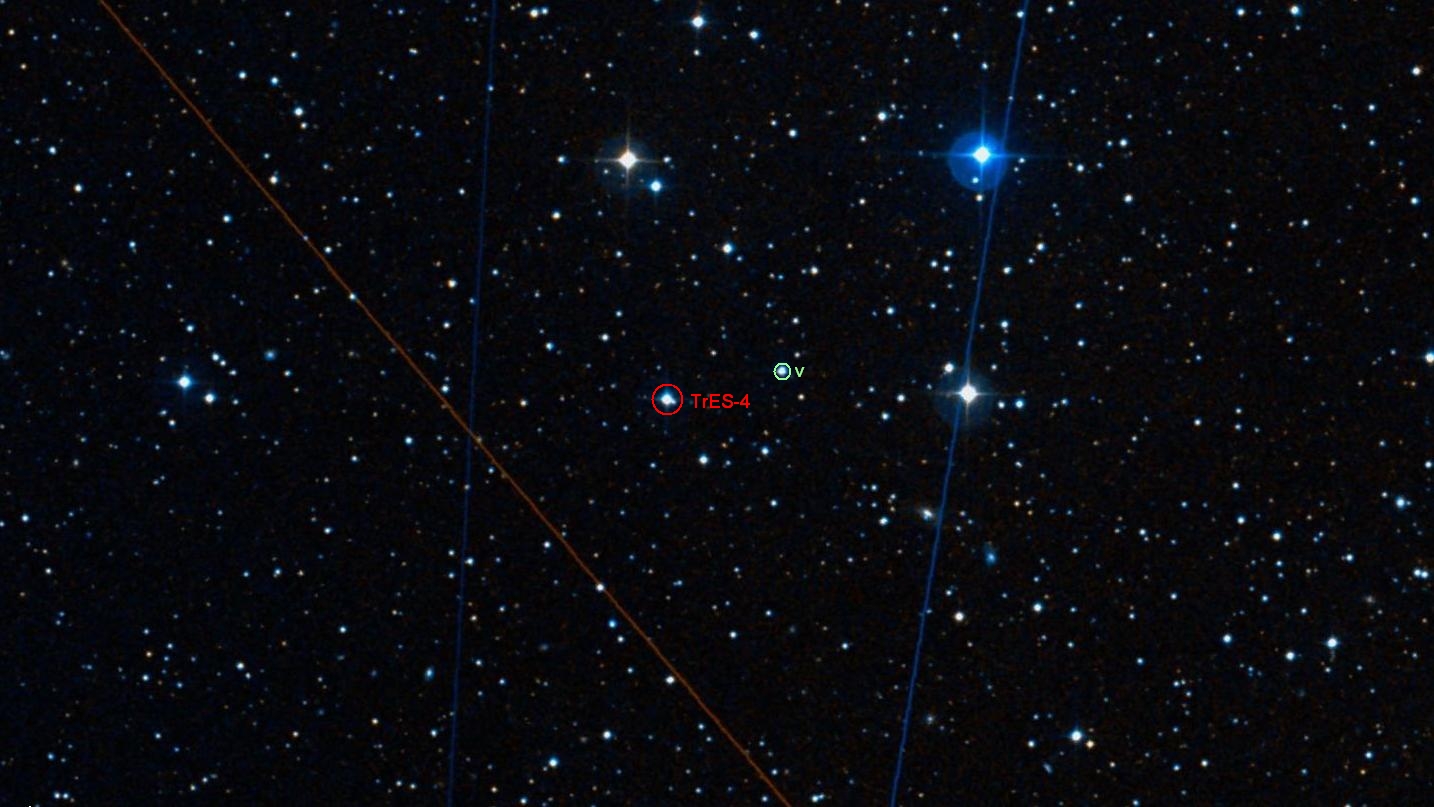
FOV ~ 22 x 13 'arc. Note that a nearby star is variable (Patrick
Wiggins, private communication) so don't use it for reference.
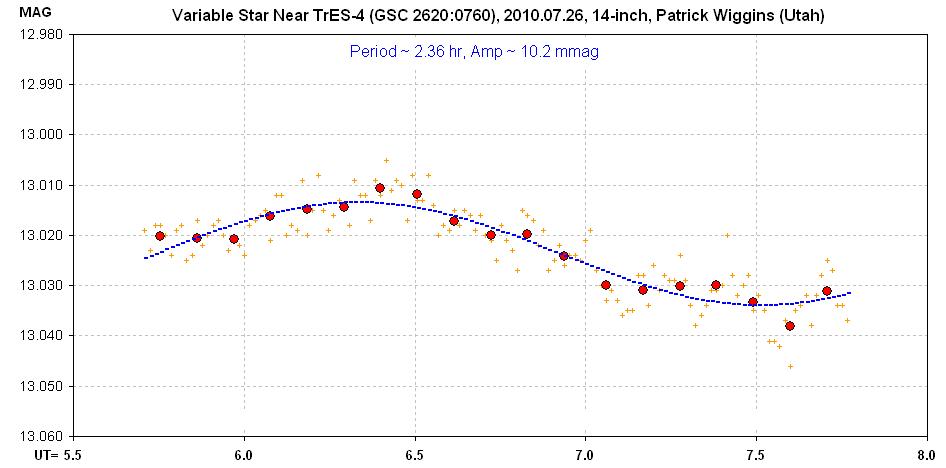
The discovery paper by Mandushev et al, 2007 includes
LCs showing depth = 10.8 mmag (z' and B-bands) with a length of ~3.5
to 3.6 hr (depending on definition used).
WebMaster: Bruce
L. Gary. Nothing on this web page is copyrighted. This site opened:
August 25, 2007. Last Update: 2010.07.26